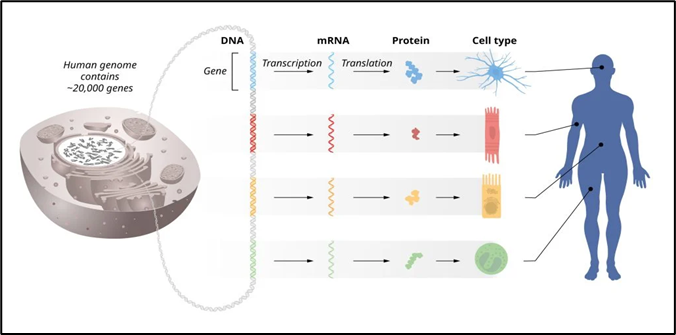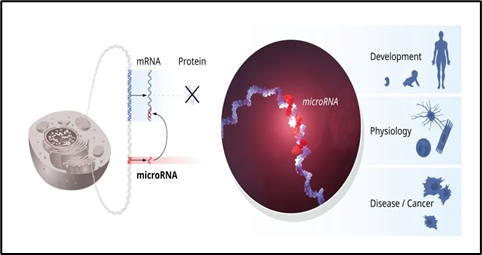Why in News?
The 2024 Nobel Prize in Physiology or Medicine was awarded to American biologists Victor Ambros and Gary Ruvkun by the Nobel Assembly at Karolinska Institute in Stockholm, Sweden.
The scientists won the esteemed prize for the discovery of microRNA and its role in post-transcriptional gene regulation.
What’s in Today’s Article?
- What are microRNAs?
- 2024 Nobel Prize in Physiology or Medicine
What are microRNAs?
- Background:
- Gene expression in cells and tissues of every complex organism is precisely controlled and largely dependent on different conditions (such as development, changes in the environment, diseases or drugs).
- Various cells and organ systems within such organisms (including humans) contain different gene expression profiles.
- Thus, proper understanding of regulatory mechanisms involved in such expression represents one of the key issues in genomic medicine.
- Non-coding RNA (ncRNAs):
- These molecules have a role in a plethora of regulatory events - from controlling the number of copies in bacterial division to X-chromosome inactivation in mammals.
- Recent genomic scans of humans and animals have revealed that the majority of RNA transcripts are ncRNAs rather than messenger RNAs (mRNAs), which code for proteins.
- About miRNAs: MicroRNAs/ miRNAs are small, non-coding molecules of RNA, which plays an important role in determining how much mRNA, which carries genetic information, eventually gets translated into protein.
- Significance of miRNA:

- The body makes proteins in a complex process with two broad steps.
- In the transcription step, a cell copies a DNA sequence into mRNA in the nucleus. The mRNA moves from the nucleus, through the cell fluid, and attaches itself to the ribosome.
- In the translation step, another type of RNA called transfer RNA (tRNA) brings specific amino acids to the ribosome, where they are linked together in the order specified by the mRNA to make the protein.
- miRNA regulates the production of proteins by bonding with and subsequently silencing the mRNA at an appropriate juncture. The process is called post-transcriptional gene regulation.
- Discovery of miRNAs:
- miRNA was initially discovered in a tiny roundworm (C. elegans) by Victor Ambros' laboratory in 1993 while studying the gene lin-14. At the same time, Gary Ravkun identified the first miRNA target gene.
- These two groundbreaking discoveries identified a novel mechanism of posttranscriptional gene regulation.
2024 Nobel Prize in Physiology or Medicine:
- Why were scientists honoured?
- The scientists were honoured for their discovery of a fundamental principle governing how gene activity is regulated.
- Gene regulation is a process that helps each cell pick the right tools for its specific tasks.
- Their research led them to the discovery of microRNA, which provided a whole new way of understanding how bodies of complex organisms such as humans function.
- Understanding the role of miRNA:

- Genetic information is stored in DNA inside the nucleus of each cell.
- This information is copied to mRNA, which carries the instructions for protein synthesis.
- Different tissues in the body create specific proteins based on their functions, such as making muscles contract and helping nerves communicate.
- Cells differentiate and perform their tasks through gene regulation, which turns specific genes on or off.
- Errors in gene regulation can lead to serious diseases, including cancer, diabetes, autoimmune conditions, etc.
- Hence, understanding gene regulation is essential for understanding and potentially treating these diseases.
- A single micro-RNA can regulate the expression of many genes, and alternatively a single gene can also be controlled by multiple micro-RNAs.
- This leads to fine tuning of different types of cells despite similar genetic information.











